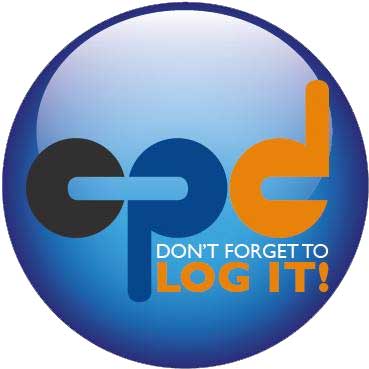Conveyancing practice and procedure
Making e-conveyancing today’s reality
The concept of electronic conveyancing has been discussed for almost two decades, and it is fair to say that it can often mean different things to different people.

About the author
Angela Gordon-Lennox is head of product: legal, environment and mapping at Landmark Information Group.
Essentially, the overarching aim is to create a fully digitised end-to-end process for a property transaction. This includes – but is not limited to – enabling property lawyers and conveyancers to interact and share legal paperwork and searches in a digital environment with all parties; create a legal mortgage online and allow the borrower to be able to sign online; manage transfer submissions to Land Registry electronically; as well as improve identify verification checks, and more.
In our view, we are now closer than ever before to seeing true e-conveyancing take shape, with digital innovations fitting into place that will make the process faster, easier, safer and more cost-effective than ever before.
We recently hosted a series of regional roundtables with Modern Law, where over 60 property law experts from across the country gathered to talk openly about the challenges and opportunities facing the sector, and its resulting impact on the legal conveyancing process. E-conveyancing was brought up at each roundtable we hosted.
It was an extremely valuable experience as we got to hear, first-hand, from those at the coalface talk about the evolution of conveyancing as they see it. With e-conveyancing firmly on their radars, particularly given government’s current focus on finding ways to improve the home-buying and selling process, it was seen that the role of digital technology, data, software and online services are all pivotal in helping to improve the current way of working.
In particular, many spoke of the challenges they face in today’s pressured market, where margins are being driven down, customers are expecting a swift – almost 24/7 – service, yet liability is continually increasing.
With less time, greater pressure on revenues and higher potential liability, e-conveyancing stands to play a pivotal role in delivering efficiencies to ultimately overcome these obstacles.
In our view, integration and workflow will be key words you will be hearing a lot more as we edge ever closer to a seamless digital transaction. Integrating existing working practices, for example, ordering and assessing property searches into your case-management workflow will prove to be just one of the steps required to join all the dots together. There are many instances where this has already begun, with legal firms providing the public with the ability to request quotes online, which are then automatically converted into an active case if given the go-ahead to proceed. The appropriate searches are then ordered and delivered directly to the online platform, which both the solicitor and the client can view.
Searches have also advanced, in the sense that it is no longer just a PDF report, but those such as RiskView or Homecheck Flood provide online access to an interactive map, so all parties can visually see if a risk is present, allowing further investigation to take place. All of this will extend further, over the coming months, from lead generation and conversion to managing each step of every transaction: technology will support decisioning, provide better automation of manual tasks and create time savings that will ultimately help conveyancers and will, of course, greatly please clients who are today living in a fast-paced, always-on, digital world.
In our view, it is all about working smarter, and we believe that 2018 will be the year of evolution for true e-conveyancing.
Robert Sanderson, managing director, Ochresoft
As a practising solicitor and also MD of a legal services software business, I have seen many aspects of the property transaction evolve over the last 20 years; digital advances are taking hold, and we have moved from first to second gear in the advancement towards electronic conveyancing.
In real terms, what does this mean? Property searches are no longer ordered through the post, but are instead ordered directly or online. Applications to HM Land Registry (HMLR) are now managed through case-management systems for machine-to-machine communication. Conveyancing correspondence is now managed through e-mail, to name just a few examples.
It’s fair to say that there has been a massive step change in terms of what technology has done so far to ease the conveyancing process, and I’m excited that there’s more emerging on the horizon.
A major advancement has been the recent announcement from government that it has authorised HMLR to use electronic signatures in a number of areas. So, from 6 April 2018, changes to the Land Registration Rules enable digital land registration, including the enablement of electronic signatures relating to HMLR, as well as digital conveyancing documents, such as mortgage deeds and property transfers.
The overall aim is to make conveyancing simpler, faster and cheaper, as well as improving security against cyber-attacks or digital fraud. As I see it, this is e-conveyancing moving up a further gear; we’re now in third!
There are many other test cases, beta testing and pilots underway for other schemes that embrace e-conveyancing. For example, Coventry Building Society and Enact Conveyancing have just completed the first digitally signed mortgage for a house in London.
There is, however, much work to do. Legal service providers should be using case management with workflows to improve speed and efficiency; however, there are many who are yet to use this. In my view, they should be using workflows to give each case the robust, measured service that clients today expect, and e-conveyancing will be a success when systems are integrated and end-to-end communication is possible.
Personally, as a lawyer, I feel that these initiatives need to be supported by a secure central place where clients and law firms can interact with one another, where communication can happen, electronic signatures can be shared and collaboration across all parties in the chain can occur.
Integration isn’t, however, something that will happen overnight as there are many pieces to the property transaction puzzle, and we await news on the ‘next big thing’ that will take us up another gear; however, I believe those that are able to make this happen and fully embrace digital methods of working are more likely to succeed in today’s competitive marketplace.
Kris Clark, head of product and operations, SearchFlow
I have worked in the search industry since 2003, and have regularly been engaged in conversations with legal firms about ways we could help speed up the home- buying process. We’ve seen several ideas and initiatives come and go (Home Information Packs as a prime example), and e-conveyancing has remained high on the agenda as we recognise the benefits of a joined-up approach to property transacting will be far-reaching.
A lot of the transformation that has taken place to date has been quite underwhelming, though we have seen efficiencies: for example, the printing of paper-based search reports broadly ended last decade, with PDF reporting gradually taking over as the new norm. The removal of ‘postal drag’ improved turnaround times by a few days.
In recent years, increased use of case-management software, alongside smarter search provider websites to log, track and receive requests, has reduced time spent on admin tasks.
It’s not until the last two years that we’ve started to see real digital advances appear on the market, some of which may finally present opportunities to change the face of conveyancing as we know it.
From a property search point of view, conveyancers can access products such as RiskView Residential, which offers a more intuitive and interactive approach to the due diligence process. Rather than simply read a standard legal PDF report, law firms are able to interact with intelligent maps and datasets that will also appeal to homebuyers. Data from searches can also be supplied in ‘packets’, which conveyancers are now integrating.
Smart firms are consuming property and environmental data into their own software and workflows and, so far, I have seen them used to produce content for client care letters, to build risk-screening and compliance reports that improve due diligence, through to more creative uses such as responsive, real-time mobile apps that provide notifications to their home-buying and selling clientele.
Law firm LegalZoom is an example of a forward-thinking business whose development we have supported. They have built a service that offers real-time estimates and updates to their clients, from the point of seeking quotations for conveyancing services online, through to case progression and tracking.
Clients have access to both a mobile app and online dashboard, from which they can liaise with the legal team. Searches are automatically ordered via SearchFlow’s integration and returned back to the case dashboard, alerting the client to areas of potential risk, with payments being made online. Operating in this way removes a lot of to-ing and fro-ing, reducing administrative burdens from the front of the process.
As I see it, it’s about working leaner, smarter and closer with our clients, delivering access to services digitally via means that consumers have become accustomed to in other walks of their daily lives.
Integration will be a major factor for e-conveyancing to succeed – making sure disparate systems and providers can communicate with one another for a seamless transaction. Artificial intelligence and machine learning will drive even greater change, and we are only just starting to realise the first benefits of our exploration in that field.
For now, simply improving communication, providing better access to information and enhancing our workflows remains a key priority. I anticipate a big leap ahead for many legal firms as they look to provide better access to services for clients for a more seamless transaction.
Technology will continue to open up such possibilities, plus, with the backing of government and its pledge to improve the transaction process, the dawn of true e-conveyancing may finally be approaching.
If you have found this article useful, why not log this towards your CPD?
For more information, visit: (https://www.cilex.org.uk/membership/cpd/cpd_resources)
